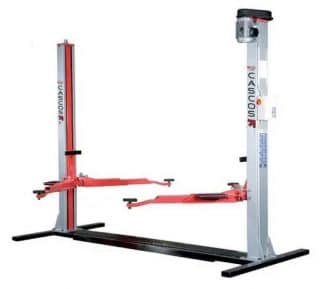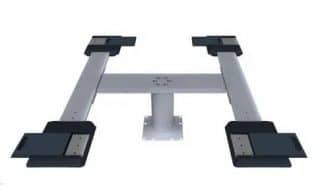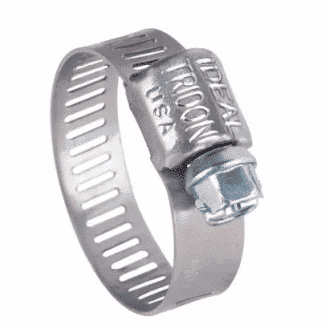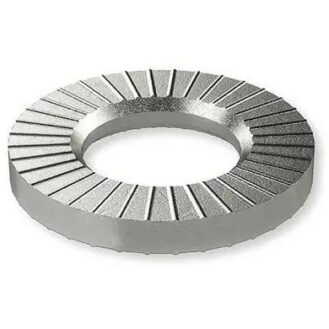There are post lifts, scissor lifts, and platform lifts.
Post lifts
Post lifts are available in different models: with one, two, or four posts.

Cascos Maquinaria, S.A. 2-post lift
- Single post lifts: Fixed or mobile, these lifts can handle vehicles up to 2.5 tons. They are used for lighter vehicles such as motorcycles.
- 2-post lifts: Lift the vehicle by the center of the chassis, leaving the wheels and underbody free, which can make certain jobs easier. This type of lift can perform all kinds of services on vehicles up to 2.5 tons.
- 4-post lifts: These have two ramps on which the wheels of the vehicle rest. They are suitable for repair and alignment services. Like certain alignment ramps, some models have a supplementary lifting system, usually a pneumatic jack, which allows the front or rear axle of the vehicle to be lifted in complete safety. Four-post lifts are, however, more expensive than one- and two-post lifts and also take up more space in the workshop.
Scissor lifts
Scissor lifts are mobile lifts, usually hydraulic, which offer higher lifting speeds than simple post models. In addition, the absence of posts allows easy access to the entire body. Hydraulic lifts require a little less maintenance than other lifts.
- Simple scissor lifts have a maximum lifting height of around 1 meter, making them a good solution for workshops with lower ceilings.
- Double scissor lifts have a maximum lifting height of around 2 meters, making it possible to reach the gearbox and exhaust system of vehicles, for example.
Platform lifts
Certain platform lifts can be a good alternative to 4-post lifts, as they can perform the same type of services and take up less space. This type of lift is generally the solution adopted by automotive and vehicle inspection centers.








